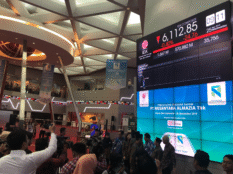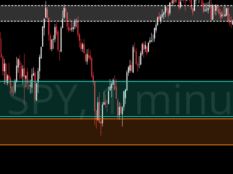What is a Stop Order?
A stop order is a type of order that instructs a broker to buy or sell a security once it reaches a specified price, known as the "stop price". The primary purpose of a stop order is to limit potential losses or lock in profits by automatically executing a trade when the market moves in a certain direction. It serves as a safety net for traders, helping them avoid significant losses in volatile markets.
Key Takeaways
- A stop order allows investors to set a price at which an order should be executed.
- Stop orders include a stop price that triggers an order to buy or sell a security.
- If the stop price is met, the stop order becomes a market order.
- You can use a financial or technical price level to place your stop order.

How Do Stop Orders Work?
Stop orders operate by setting a specific price point, known as the stop price or stop level. When the market price of the security reaches or goes beyond this point, the stop order is triggered. This prompts the broker to place a market order to buy or sell the security at the current market price. However, it's crucial to understand that stop orders don't assure execution at the precise stop price; their role is to activate a market order when the stop price condition is met.
Also Read: Stock Market Order Types That You Should Know
Types of Stop Orders
There are several types of stop orders, each designed for specific trading scenarios and strategies:
Stop-Loss Order: This is the most common type of stop order and is used to limit potential losses. When a trader places a stop-loss order to sell a security below the current market price, it ensures that the security will be sold automatically if its price drops to or below the specified stop price.
Buy-Stop Order: Contrary to the stop-loss order, a buy-stop order is used to enter a long position. It is placed above the current market price, and when the market price reaches or exceeds the stop price, a market order is executed to buy the security.
Sell Stop Order: A sell stop order initiates a short position. It is placed below the current market price, and when the market price reaches or falls below the stop price, a market order is executed to sell the security.
Trailing Stop Order: A trailing stop order is a dynamic stop order that adjusts as the market price moves in the trader's favor. It is set as a certain percentage or fixed amount below the market price for long positions and above the market price for short positions. As the security's price increases, the trailing stop price moves up, locking in profits while allowing for potential further gains. The order is executed if the price reverses and hits the trailing stop price.
Stop Limit Order: A stop limit order combines elements of both stop and limit orders. It includes a stop price and a limit price. When the market price reaches the stop price, a limit order is triggered, instructing the broker to buy or sell the security but only at the specified limit price or better.
Factors to consider when setting stop loss levels
Volatility: The stop-loss should be set as per the volatility of a security. The more volatile a security is, the more important it is to have a stop loss in place.
Liquidity of the stock: Some stocks have very low trading volumes, which means that even if you have a stop loss in place, it might be difficult to sell your shares because there are few buyers. Therefore, buying illiquid stocks has its own set of risks, and using a stop-loss strategy becomes essential.
Position size: If you hold a significant amount of a stock, it can be tricky to trade in an illiquid market. Hence, it's wise to only invest in positions that align comfortably with your overall net worth when considering the size of that investment.
Determining the right stop-loss level
Setting a stop loss level is a subjective process that varies from person to person. Individuals with a higher tolerance for risk often choose lower stop loss levels, while those with a lower risk tolerance will definitely set the stop loss level high.
One widely used approach for setting stop-loss levels is the percentage method. This method is simple and efficient; before establishing the stop-loss level, the investor must decide the percentage of the stock price they are willing to give up before exiting their trade.
For example, an investor bought a share for $100 and decided to set 10% of the loss to bear while exiting. So, he will set the stop loss limit from 90-100, which will limit his potential loss to 10% of the price.
Benefits of Using Stop Orders
Risk Management: Stop orders are a crucial tool for managing risk in trading. They help traders limit potential losses and protect their capital in volatile markets.
Emotion Control: By predefining entry and exit points, stop orders help traders stick to their trading plan and avoid making impulsive decisions driven by emotions like fear or greed.
Convenience: Stop orders automate the trading process, reducing the need to monitor market prices constantly. This is especially beneficial for traders with busy schedules.
Locking in Profits: Trailing stop orders are particularly useful for locking in profits as the market moves in the trader's favor, ensuring that gains are not eroded if the trend reverses.
Execution Speed: When the stop price is triggered, stop orders are executed as market orders, providing faster execution compared to limit orders.
Risks and Considerations
While stop orders offer numerous advantages, it's essential to be aware of potential drawbacks and considerations:
Slippage: In fast-moving markets or low-liquidity stocks, the execution price of a stop order may differ significantly from the stop price due to slippage.
Market Gaps: A sudden gap in the market price can cause a stop order to be executed at a substantially different price than the stop price.
Whipsawing: In volatile markets, stop orders can be triggered frequently, resulting in multiple small losses, known as whipsawing.
Not a Guarantee: Stop orders do not guarantee execution at the stop price, especially during extreme market conditions.
Stop Order vs. Limit Order
One important difference between stop and limit orders is how they handle pricing. A stop order relies on the best market price available at the moment, rather than a specific price you set in the order. When the stop price is reached, the stop order automatically becomes a market order. In simple terms, a market order instructs your broker to buy or sell a stock at the current best available price, similar to when you tell your broker to buy a stock immediately at the best available price (not during active trading, but for regular stock purchases).
A limit order is executed at the price you specified or better, which slightly reduces the chances of the order executing compared to a stop order. If the stock price never reaches your specified limit, your trade won't be executed; however, a stop order would execute because it relies on the best available price.
Also Read: Market Order vs Limit Order: Key Differences and More
Stop Order Example
Let's assume that an investor buys 100 shares of XYZ Corp for $70/share, for a total cost of $7,000. However, the price of XYZ declines to $60/share, making the position worth only $6,000. At this point, the investor is sitting on a $1,000 unrealized loss. If the investor decides that they are unwilling to accept losses of more than $2,000 on their position of XYZ, they can set a sell-stop order for $50/share. If XYZ's price drops to $50 or lower, the 100 shares will be automatically sold, protecting the investor from further losses.
Conclusion
Stop orders are powerful tools for traders to manage risk, protect investments, and enhance trading strategies. Understanding the different types of stop orders and their applications is essential for successful trading. While they come with risks, these orders, when used effectively, can help traders maintain discipline, control their emotions, and navigate the unpredictable world of financial markets with greater confidence. Incorporating stop orders into your trading strategy is a valuable step toward achieving your financial goals and minimizing potential losses.



